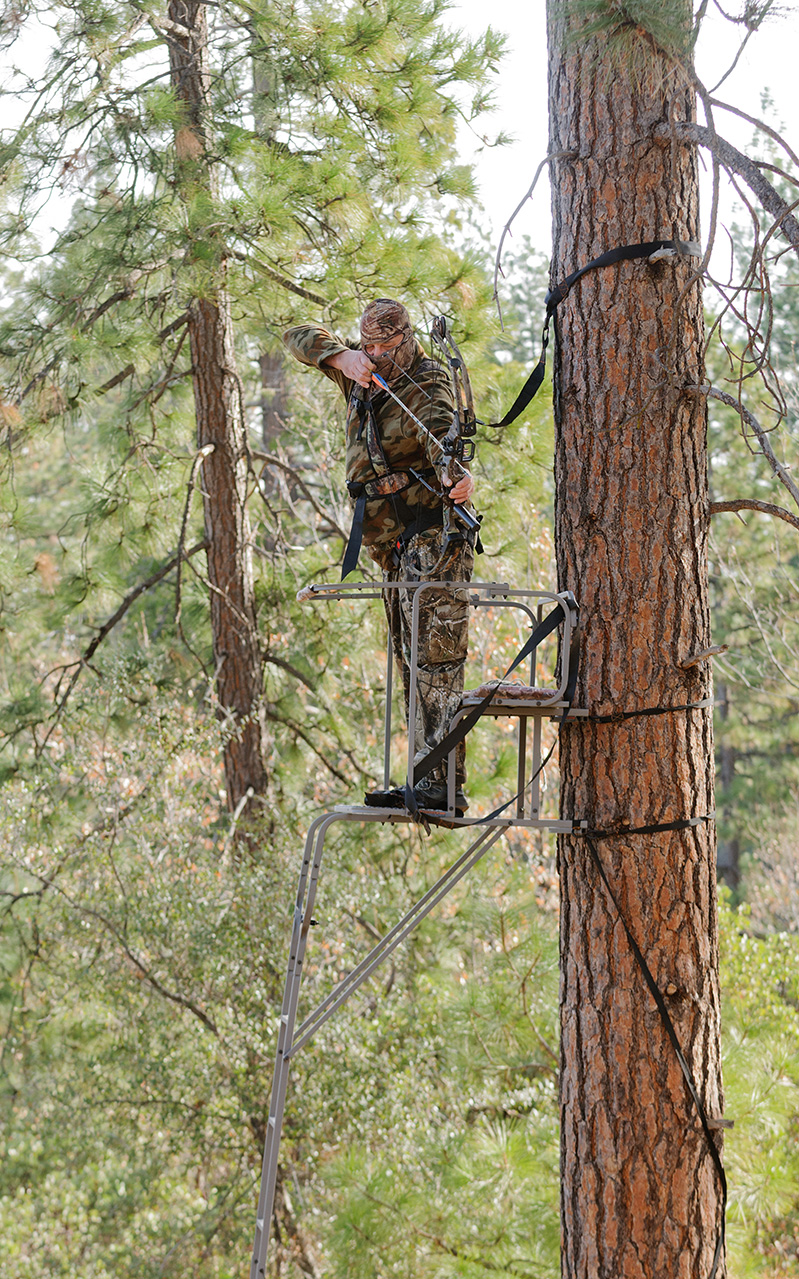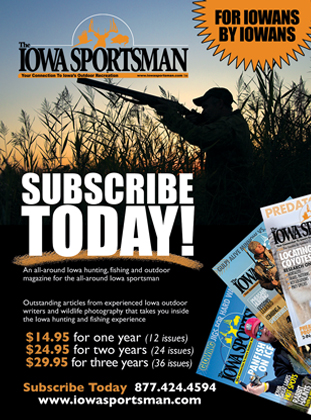Treestand Safety

By Jacob Dean
September is Treestand Safety Month. If you’re an avid Iowa hunter, chances are high that you hunt out of a treestand. Treestand hunting gives us advantages, but it comes with some risks. Falls from treestands are a leading cause of serious injury and death among hunters. Estimates for fatalities from tree stand accidents vary, with some sources citing 300-500 deaths annually in the U.S. (International Hunter Education Association – IHEA). It seems like every year, we hear the unfortunate news that a hunter is either seriously injured or has passed away from injuries from falling from a treestand.
Wear Your Harness
Always wear your harness! This is the most critical piece of safety equipment. It’s designed to distribute the force of a fall across your entire body, protecting you from serious injury. Crucially, wear it from the moment your feet leave the ground until you are back on solid ground. Most falls occur when going up and down the treestand, not just when sitting in the stand.
Also, ensure your harness is a full-body harness that meets industry standards (like those set by the Treestand Manufacturers’ Association). Single-strap belts and chest harnesses are outdated and dangerous. Practice putting on and adjusting your harness at ground level before hunting.
Use a Lifeline
A lifeline (also called a tree stand safety line or climbing rope) is a crucial component of a treestand safety system that allows you to remain continuously connected to the tree from the moment you leave the ground until you return.
A lifeline typically consists of a long, static rope, a Prusik knot, and a carabiner. One end of the lifeline rope is secured around the tree above your treestand, and the other end is tied off at the base of the tree or a lower anchor point. The Prusik knot is a special friction hitch tied around the main lifeline rope. Your harness tether (via a carabiner) clips into this Prusik knot. As you climb up or down the tree, you slide the Prusik knot along the main lifeline rope. When moving the Prusik knot, do not grip it directly. Instead, slide it from above or below. Gripping it can prevent it from tightening correctly if you fall. If you slip or fall, the Prusik knot instantly tightens around the rope, arresting your fall and preventing you from hitting the ground.
The primary benefit of a lifeline is that it eliminates the dangerous “transition zones” where most treestand accidents occur – the moments when you are climbing into or out of the stand and would otherwise be unattached. With a lifeline, you are always connected. For best safety, use a full-body harness with a lifeline. Be sure to install lifelines at every stand.
Inspect Your Equipment
Before each use, thoroughly inspect your treestand, harness, and all straps, ropes, and hardware for signs of wear, cracks, rust, or damage. Replace any worn or damaged components immediately. Straps can deteriorate over time due to UV exposure, weather, and ozone exposure. Harnesses have a recommended lifespan (often five years) and should always be replaced after a fall.
If you do fall, you need to replace your harness. Most hunting harnesses are designed for a single fall. Falls can stress the harness’s breakaway stitching, which is designed to absorb impact and decrease speed. Once this stitching is compromised, the harness loses its shock-absorbing capacity and won’t protect you effectively in another fall. Even if no damage is visible after a fall, the harness could have unseen damage that compromises its integrity. Just be safe, and get a new one after a fall.
Safety Tips
Never climb or descend with your gun, bow, or other gear in your hands or on your back. Use a haul line, and make sure the haul line is in prime condition and will not break. Use a sturdy haul line to raise and lower all your equipment. Aldo, guns should be unloaded when you raise and lower your equipment.
Always inform a person of your exact hunting location and when you expect to return. This way, if something goes wrong, help can be sent. I’m sure you have several different hunting locations, and if you don’t come back, make sure someone knows where to look for you. You also should carry emergency equipment with you, such as a fully charged cell phone, flashlight, and a knife.
If You Fall
Keep your cell phone and knife in a front pocket. This way, if you do fall and are suspended, you can reach your cell phone to call for help. There have been instances where hunters have passed away because they fell and the harness cut off their blood supply for too long. If you have your phone and knife in a pocket that is accessible at all times, you can cut yourself down or call for help.
If you do fall, and are hanging by your harness, try to recover and get back into your stand if possible. If you cannot recover, use your suspension relief strap (a loop on your harness near your feet) or constantly move your legs by pushing against the tree to maintain blood circulation. This is crucial to prevent “suspension trauma,” where blood pooling in your legs can lead to serious health issues or even death. Call for help immediately. The sooner, the better.
Install the lifeline so it extends from the ground to a point at or just above your head level when standing on the treestand platform. Ensure the tail end of the lifeline is tied off at the bottom of the tree to provide tension for easy one-handed operation of the Prusik knot.
By consistently using a full-body harness in conjunction with a lifeline, hunters can drastically reduce the risk of serious injury or death from treestand falls, making their time in the woods much safer.
Hunting season is a brief time in our year, so make sure you get to enjoy every minute of this season and seasons to come. Use a lifeline and safety harness to keep you safe. Also, have your phone and knife where you can reach them easily, and always let someone know where you are planning to hunt.

